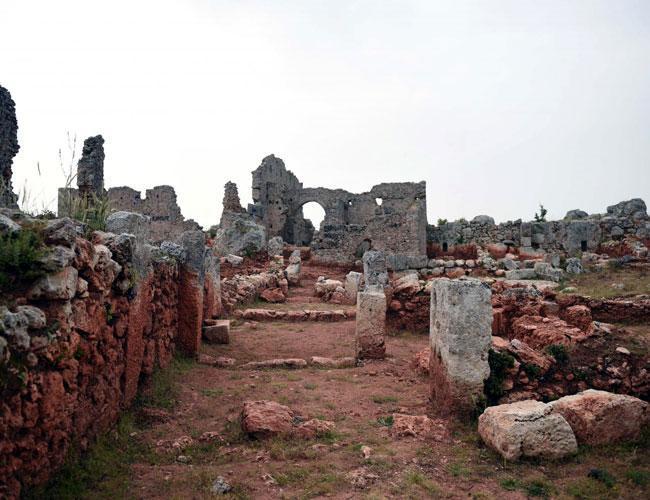
The remnants of a 2,200-year-old ancient city were found seven years ago, hidden under weeds and thorns, in the southern province of Antalya. Examinations have restarted in the site following statements by officials about treasure hunters.
The Mediterranean Municipalities Union and the mayor of Kepez district, Hakan Tütüncü, spoke about the story of the ancient city of Lyrboton Kome, which is home to houses, baths, churches, graves, olive oil plants and the Arete Tower that are perched on a vast field.
“Treasure hunters have excavated this field for years. We started an investigation after locals warned us about it,” Tütüncü said.
He said there was widespread pollution on the field and that they found the historical remnants under weeds, grass and wild plants.
The 2,200-year-old ancient city was discovered by a team from Akdeniz University’s archaeology department.
“We first cleaned the area to get rid of the weeds and wild plants. Then a project was carried out for archaeological works. We found interesting information in every excavation. We learned that this place was one of the first centers where olive oil was extracted and produced in Anatolia. We learned that there was a big facility, under which an important history lied. The ancient city is important enough to tell us the historical journey of olive. Now we are working to promote this historical heritage of Antalya to Turkey and the world,” Tütüncü added.
Olive oil museum to open
Tütüncü said the first stage was finished after a four-year work in the region and the field was opened to visitors after walking routes were set up.
Stating that restoration and renovation works continued in the region, he said, “We plan to turn this place into an archaeology park. Visitors will be able to see houses, baths, churches, cisterns, graves, olive oil plants as well as the Areta Tower and the ancient city. Also, we plan to open Turkey’s largest and most comprehensive museum in Antalya. We’re planning a special museum, and I hope we will realize it. The ancient city shows us that olive oil existed in the Mediterranean region before it did in the Aegean region. We will tell the history of olive oil.”
Tütüncü said that after the discovery of the ancient city, they made examinations on olive and olive oil, and that it was first used as fuel to burn candles and not in food.
Nevzat Çevik, a professor and scientific consultant for the Lyroboton Kome ancient city excavations, said they had found unique information about the story of the region.
He said the story had started with a woman named Arete.
“Arete was a powerful woman and was the reason behind the existence of this city. She has an important role in the establishment of the olive oil foundation. She built the Arete Tower and devoted it to the Emperor Domitian and the Artemisi of Perge. Most importantly, she established the olive foundation and institutionalized production. Her daughter Kille and the next generations maintained these duties. We see that there was female dominance in the region,” he said.
Çevik said that the ancient city had more than 100 olive oil plants and Roman-era baths, five Byzantine-era churches, buildings and the remnants of the Areta Tower.
“The ancient city was an important olive oil production center in the region. The artifacts, architectural structures and graves found during the excavations had been there for centuries, but we did not know about them,” he said.